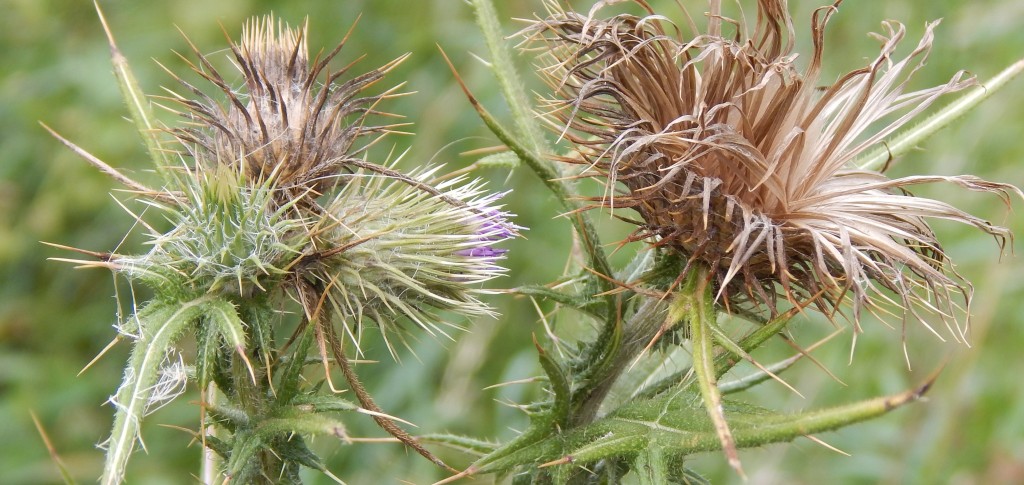
[082] Cirsium arvense, Creeping Thistle
Cirsium vulgare, Bull Thistle
Introduction
Cirsium arvense, Creeping Thistle, and Cirsium vulgare, Bull Thistle, are both common and widespread weeds in the countryside.
Cirsium arvense is also known as Field Thistle (a name used in America for Cirsium discolor.) In America it is widely known as Canadian Thistle or California Thistle and may also be called Corn Thistle, Cursed Thistle, Green Thistle, Hard Thistle, Perennial Thistle, Prickly Thistle, Small-flowered Thistle, Way Thistle or Stinger-needles.
Cirsium vulgare may also be called Spear Thistle, Common Thistle, or Scots/Scotch/Scottish Thistle.
I will leave Cirsium eriophorum, the Woolly Thistle, until tomorrow.
Taxonomy
Kingdom – Plants
Phylum – Vascular Plants
Class – Angiosperms (Flowering Plants)
Order – Asterales
Family – Asteraceae
Subfamily – Carduoideae (Thistle family)
Tribe – Cynareae (Mostly thistles)
Genus – Cirsium (Plumed Thistles)
Scientific Name – Cirsium arvense, Cirsium vulgare
The taxonomy is fluid and not agreed. Carduoideae is called the Thistle family but only two genera, Cirsium and Carduus, are called true thistles.
Name
Thistle comes from Old English roots (cognate with ‘stick’) meaning ‘to prick.’ Cirsium is Latinized from the Ancient Greek ‘kirsion,’ a type of thistle plant. This may come from the Greek ‘kirsos,’ a swollen vein as the plant was used as a remedy. The Latin arvensis means from the field or meadow. (Arvense is neuter to match Cirsium.) Vulgare means common.
Description
Thistles, in the Aster family, have large flower heads consisting of disk florets, with an enlarged, spiny flower base, and prickly leaves. They are amongst the best producers of nectar in Britain. There are well over a hundred species of Cirsium, both from Eurasia and North America
Cirsium arvense is aptly named. It has long and thick vertical and horizontal roots and spreads.
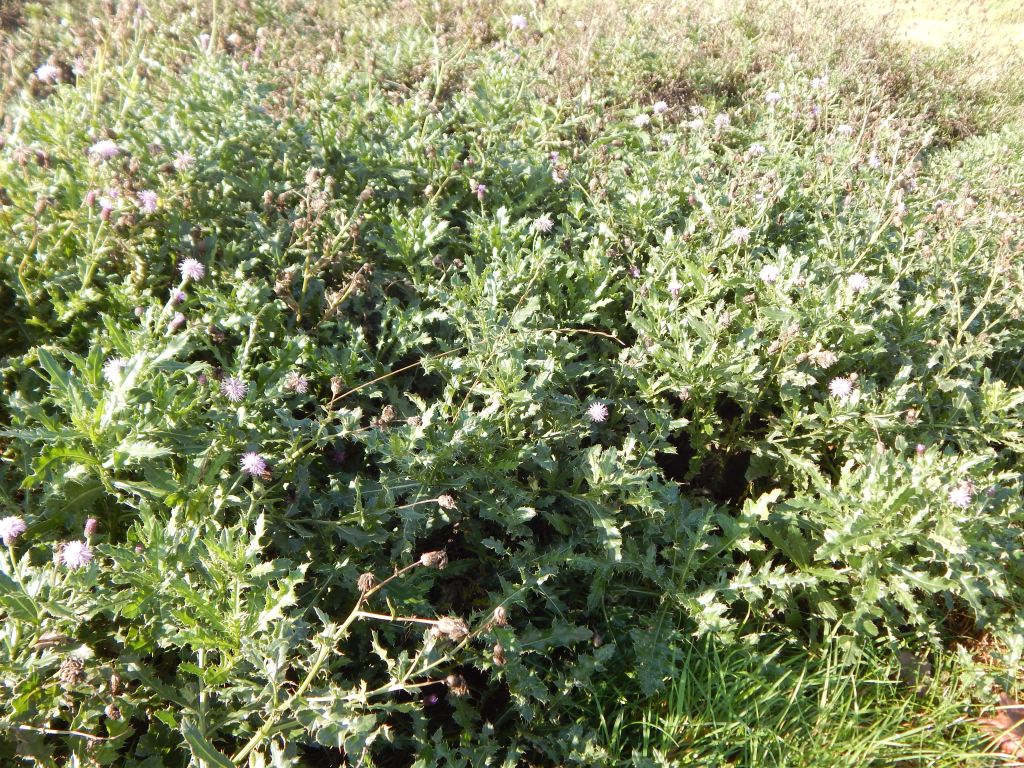
The leaves are spiny and lobed.

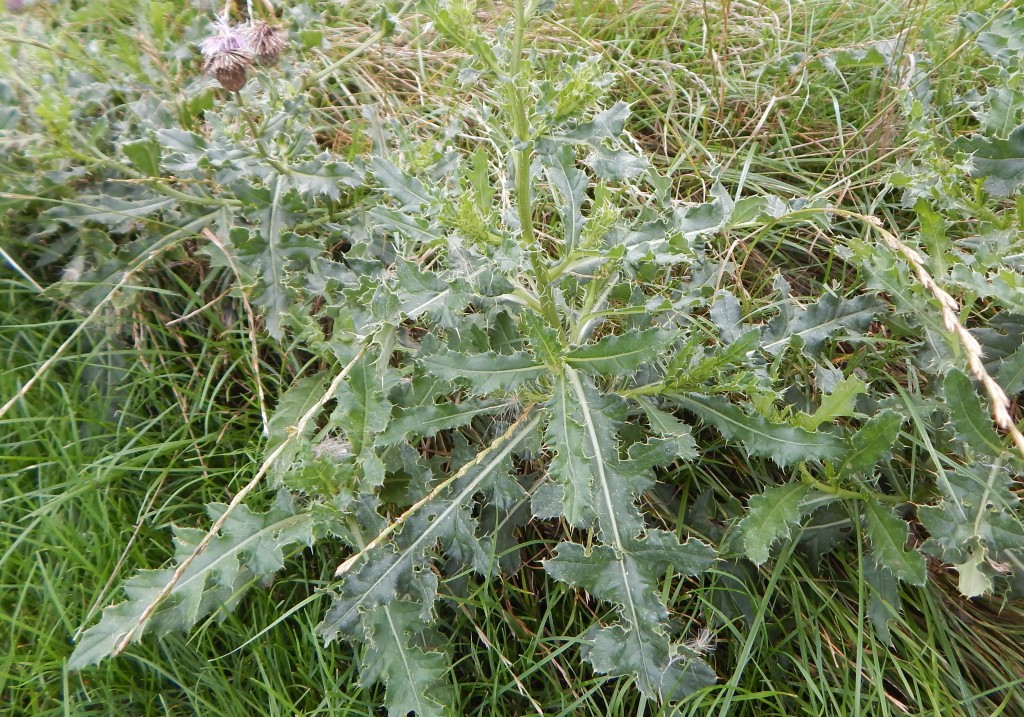
The inflorescences are typical thistle flower heads with about a hundred individual florets, pale pink or purple in colour.

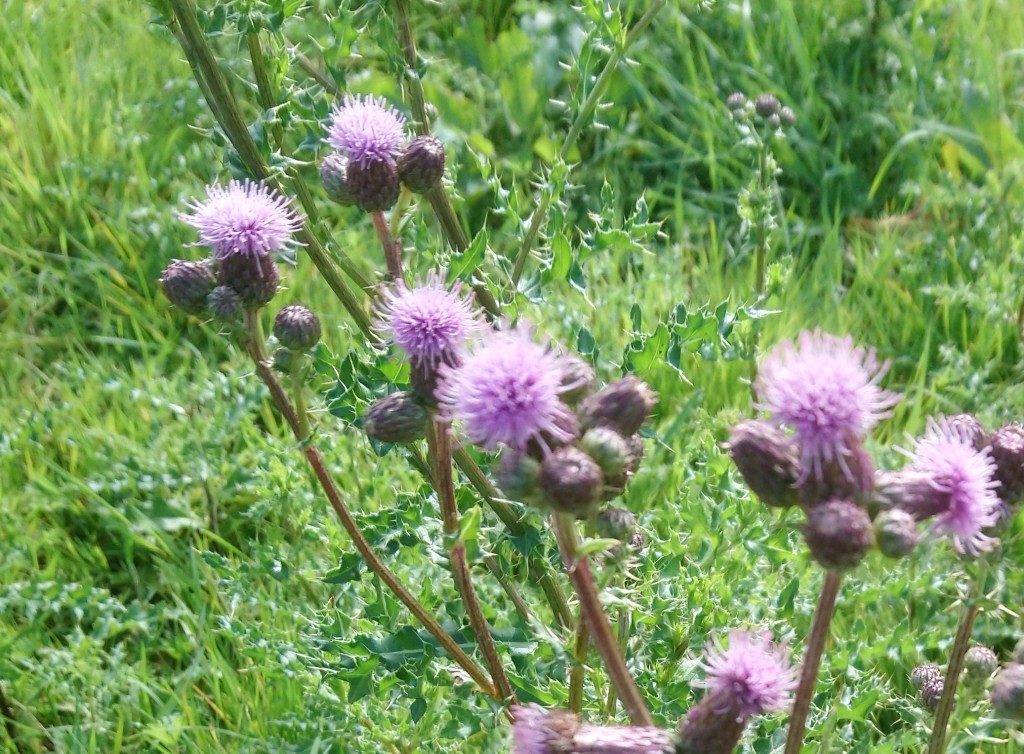
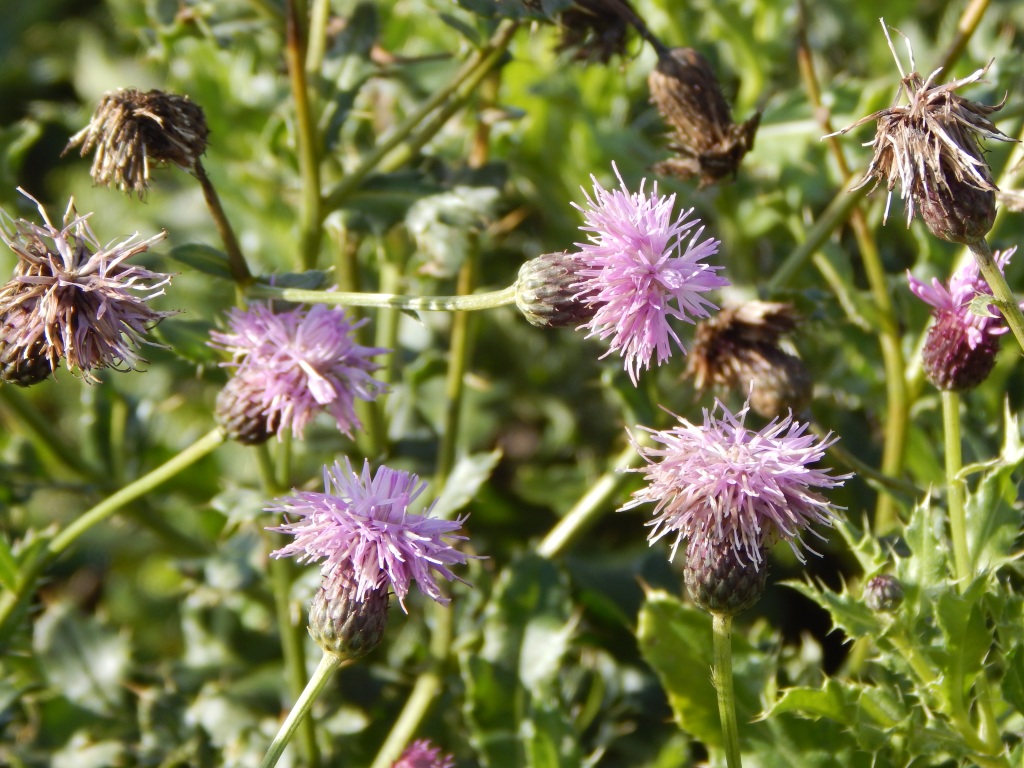

Cirsium vulgare is the thistle that is the national symbol of Scotland. Its flower heads are slightly larger, a darker colour and with spinier bases.
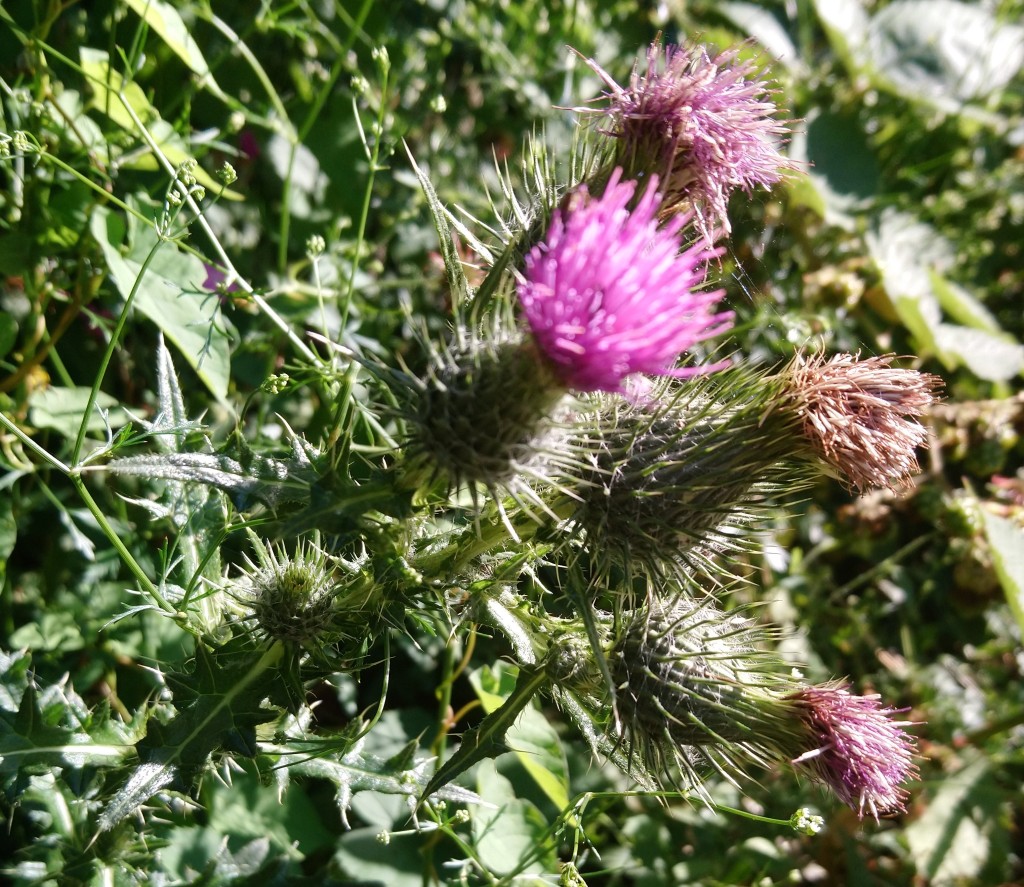
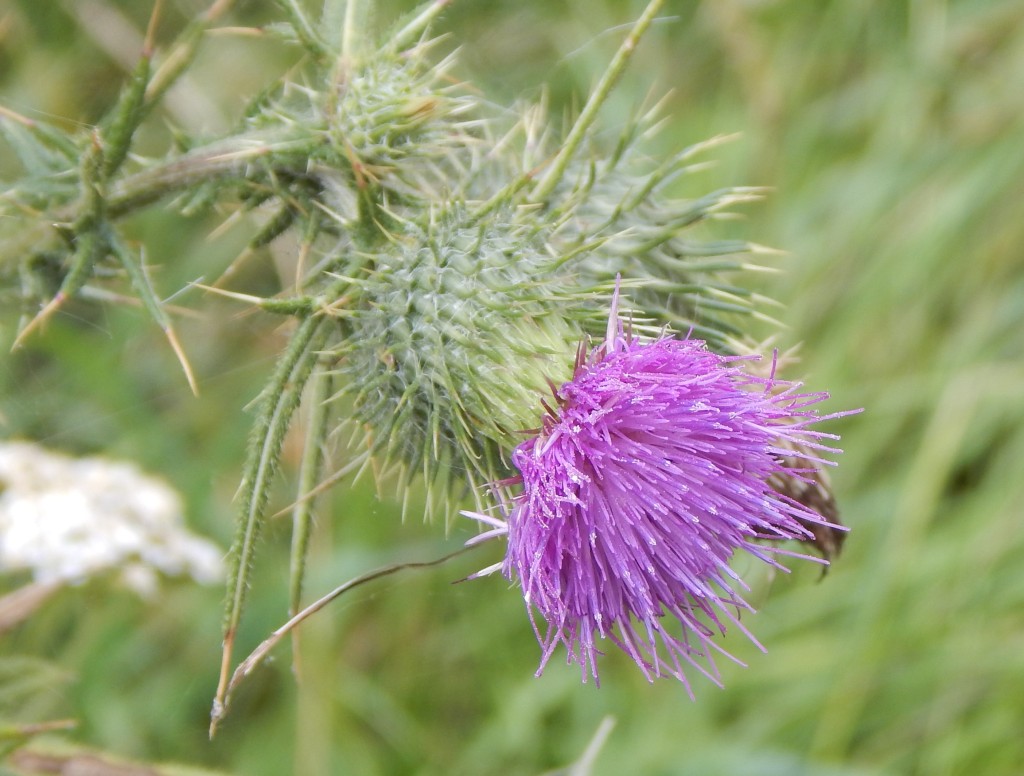
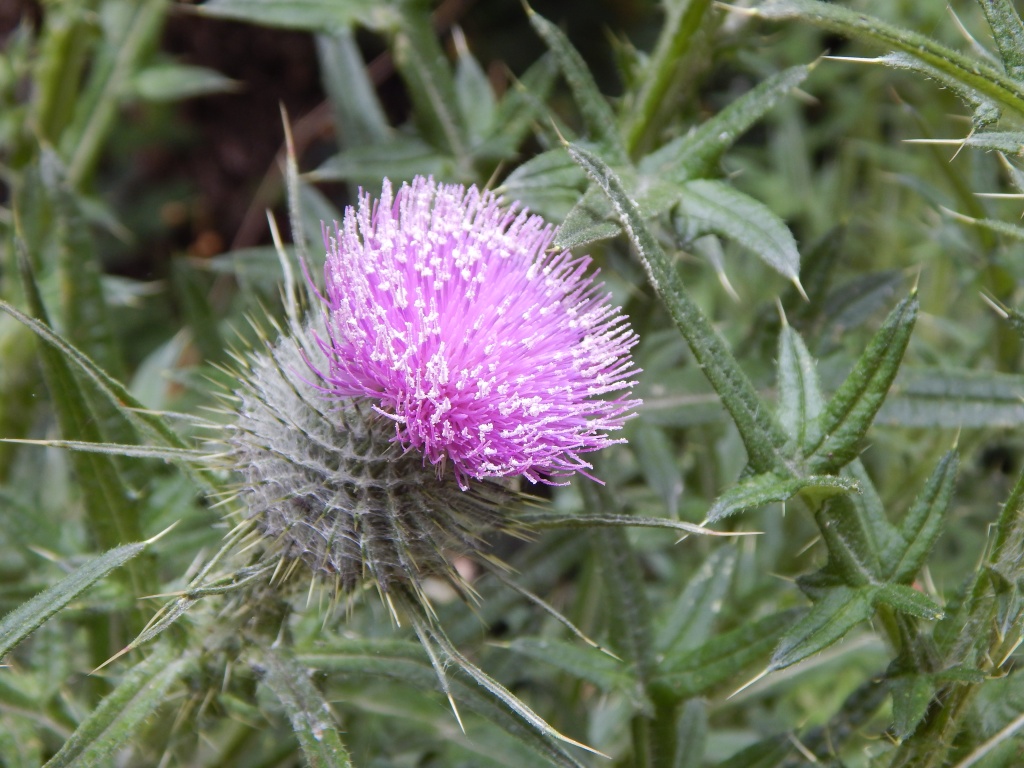
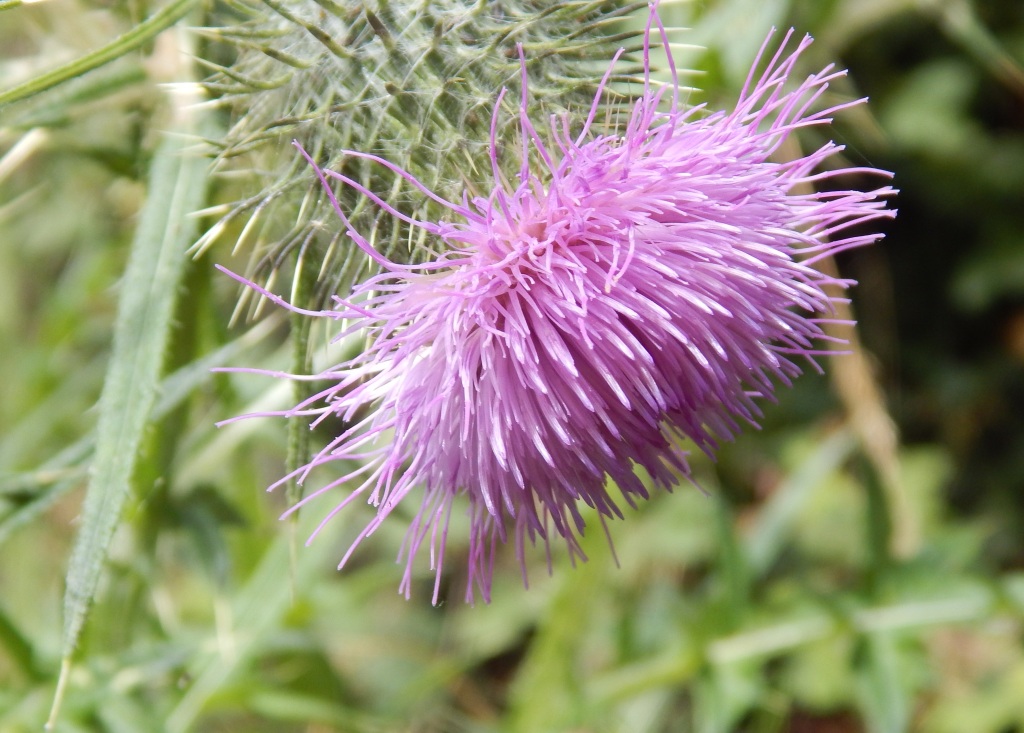
The seeds of both species are important sources of food for [067] Goldfinch and other finches.
Habitat and use
Cirsium arvense is common throughout Europe and Western Asia. Cirsium vulgare is also common in Europe.
Both have been introduced elsewhere. In many countries, including most of America, they are considered invasive, noxious weeds.
Other Notes
I discovered a field full of Creeping Thistles recently on the Isle of Wight where most of the growing plants had parts that were completely white. A quick Internet search revealed that this has been observed at several places in England.
It is caused by an infection with the bacterium Pseudomonas syringae, which has over fifty varieties, each specific to a single species.


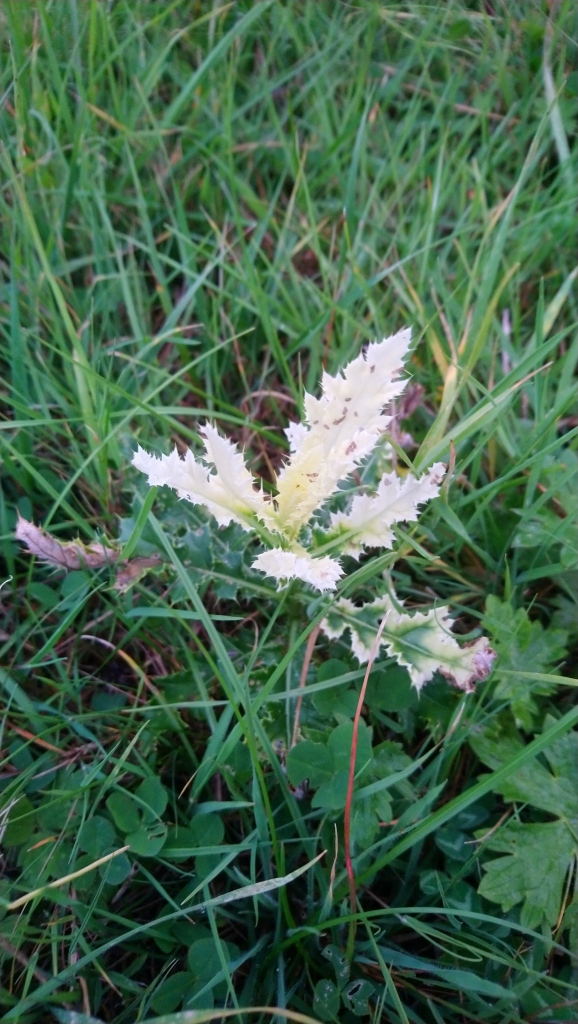
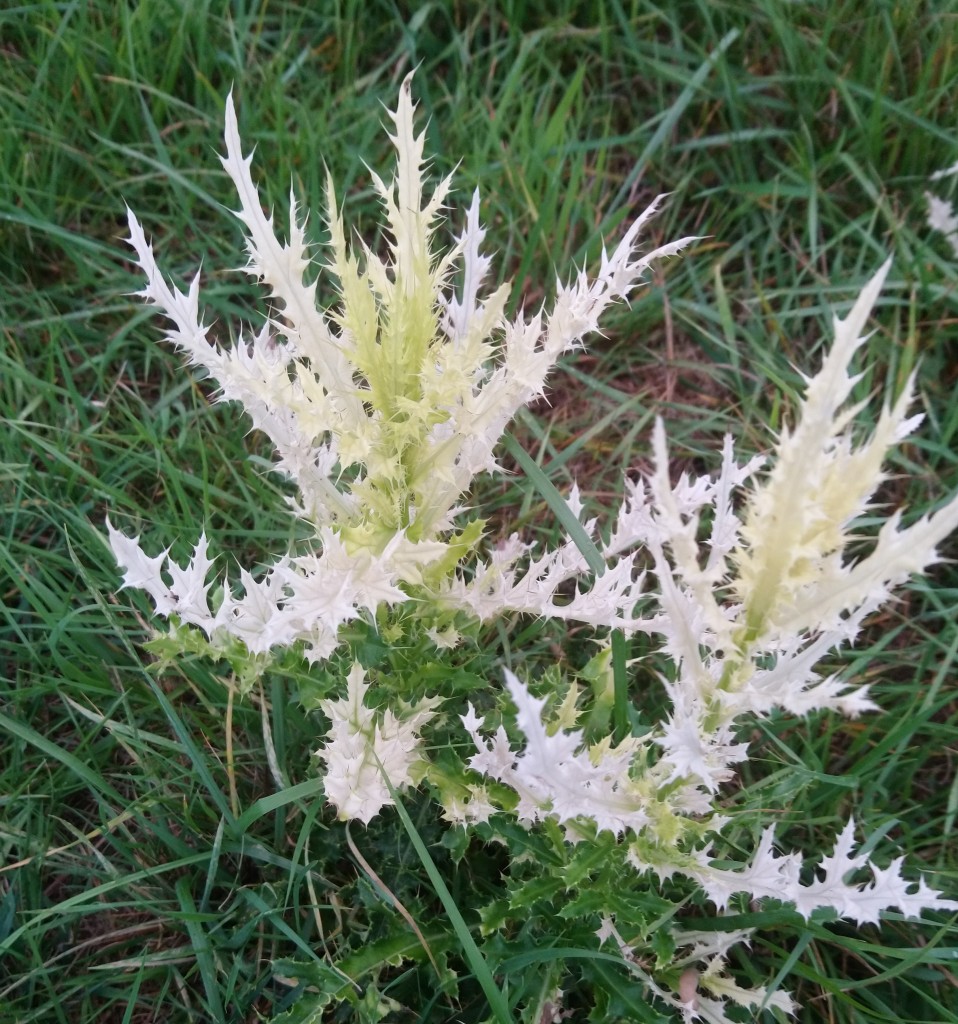
See also
Tomorrow we will see [083] the Woolly Thistle. [111] Artichoke is a more distant relative.

Pingback: [240] Oedemera nobilis, Thick-legged Flower Beetle | The Species of Britain